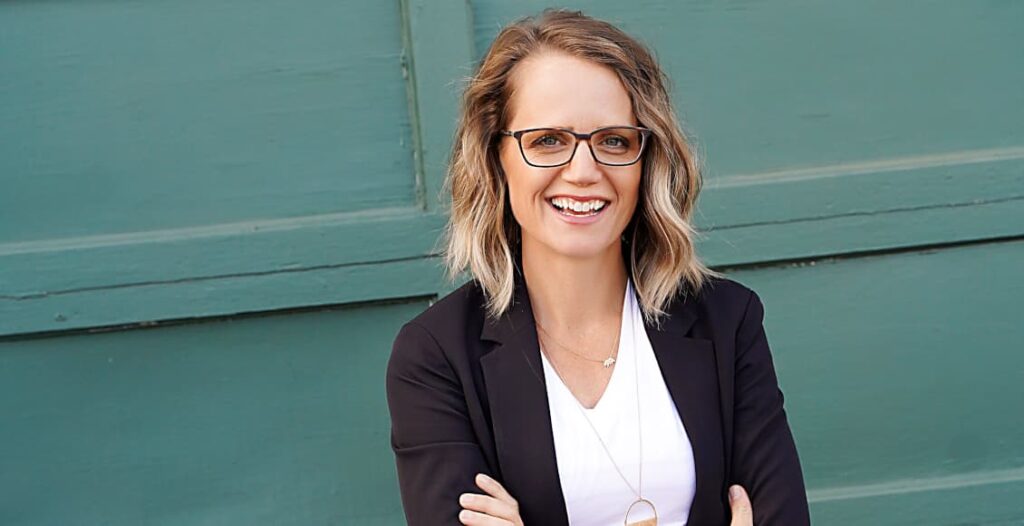Amanda Schneider, Founder & President of ThinkLab and Host of Design Nerds Anonymous on the SURROUND Podcast Network writes for us about meeting listener needs.
You did it! You finally launched that podcast you’ve been dreaming about. Episodes are live, seasons are in development, and listeners are tuning in. Now what? How do you keep them coming back?
When I launched Design Nerds Anonymous in 2020, the podcast was more exploratory. I was curious to bring in voices from outside the industry and translate those insights for our listeners. Over the past five years, our brand, team, and expertise have matured, and so has our approach. We’re now more intentional about what we want to accomplish each season, more targeted in guest selection, and more direct with our questions. This focus has made it easier to deliver sharper, more insightful episodes. The last five years have taught my team and I to be more purposeful about what we aim to achieve each season. We don’t try to be “all things to all people.” Instead, we focus on a single topic or overarching message and target a specific subset of our audience.
While you’ll learn plenty of lessons—and make your fair share of mistakes—here are three key ones I’ve discovered along the way:
1. Listen to your Audience, REALLY Listen
“How can I grow my podcast?” As hosts, it’s a question we find ourselves asking consistently. The best way to grow organically is to truly listen to your audience and evolve your content in response. Above all, podcasts grow by staying true to their roots. As the musical Hamilton reminds us, “If you stand for nothing, what’ll you fall for?” Beyond that, audiences “vote” with their listens and shares, directly showcasing what resonates the most.
Personally, I find it important to dig into detailed metrics, even leveraging AI to analyze performance, and let that data push us to think bigger with our topics and how we resonate. At the same time, you can’t be afraid to experiment. For example, for my other podcast, BASELINE, I once outsourced my job for a day to AI—and the strong listener response proved that audiences appreciate being pushed out of their comfort zone (you can listen to that episode here). Growth comes from balancing consistency with curiosity.
Listener insights are essential for understanding how your podcast resonates. Downloads matter, of course, but even more telling is how long people listen. When listeners stay through an entire episode, it shows true engagement. Hosts should also pay attention to what gets shared and discussed on social media, as this reveals which ideas spark the most interest. These signals should guide the shaping of future episodes and help track the success of new experiments.
2. Don’t be Afraid to Share your Passion
If you are passionate about your podcast, your listeners will gravitate towards your show. You have to feel it, believe it, and live it—because listeners can instantly tell if a show is passion-driven or just chasing numbers. People don’t want to tune in to something that feels like a marketing push; they want to be part of what makes another human light up. More often than not, listeners connect with the host even more than the show itself.
That passion also can’t stop at the launch. Too many podcasts treat the release of an episode like a one-time event, but to me, that’s just the beginning. Data shows that people need to hear something seven times before it really sticks, so I keep going back to older episodes, even ones from 2020, and re-sharing them.
When done well, podcasts are timeless, with conversations that can still resonate years later. I often re-listen myself and catch details I’d forgotten, which reminds me of the content’s lasting value. When hosts stay genuinely engaged with their own material—before, during, and long after launch—that passion becomes contagious, fostering real connection and loyalty.
3. Creating Meaningful Connections with Listeners
Another important lesson I’ve learned over the years is the importance of creating connections with my listeners. This goes beyond just listening to their feedback but really understanding them as human beings. What are their challenges? What does success look like to them? What inspires them? What questions do they have today? Yes, statistics matter, and you should pay attention to them, but as we often say on Design Nerds Anonymous, it’s really about the phygital journey: merging digital data with the real humans behind the numbers.
While metrics can show what’s performing, in-person feedback is just as valuable. I give about 30 keynotes a year and pay close attention to what sparks conversations afterward. Those moments may not generate thousands of impressions, but when someone goes out of their way to mention an idea or episode, it tells me more than any spreadsheet ever could. While surveys and data provide insight, they don’t compare to the value of human-to-human dialogue your episodes can provoke.
Over the last five years, I have learned that staying true to your voice, leaning into your passion, and genuinely engaging with your audience are what make for a successful podcast. To me, each and every episode serves as an opportunity to refine your approach, experiment, and connect with listeners. While the lessons you learn will certainly evolve as your podcast grows, the core remains the same: listen, care, and create content that connects with your audience.






